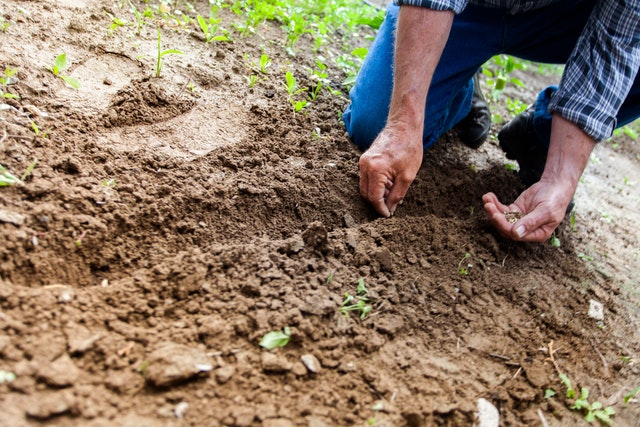A common and simple to grow indoor plant is the pothos. Have you ever wondered if pathos can live, survive, and blossom outside? Yes. Pothos Can Pothos Live Outside. Don’t get misled by the fact that nearly all the pothos plants you see are grown inside.
Pothos can grow faster and better outside when exposed to the right conditions. But this is where most people who have attempted to grow the plant at one point often missed it. Pothos is a sensitive plant that needs good soil, proper watering, and enough space to spread.
When these conditions are absent, the plant doesn’t do well; and may die in an extremely unfavorable condition.
Everything you need to know about growing the pothos plant outside is covered in this piece. Make sure you read every string of sentences conscientiously to get the best out of the article.
Can Pothos Live Outside?

Pothos are normally seen as plants hanging indoors. They are often seen thriving and growing under the fluorescent lights of home and office buildings. When you take them out, you give them a better chance to grow well.
When planted outside, the plant gets access to better light conditions, which can activate a healthier and faster growth. You can grow them in open spaces and in the garden, provided they are always properly cared for.
Pothos are easy to grow and do not need much care and attention to turn out well. Yet, they need the right nutrients, water, and temperature when grown outside.
The Benefits of Outdoor Pothos
Enhancing Air Quality and Aesthetics – Growing pothos outdoors not only provides a beautiful addition to your garden but also offers numerous benefits. One significant advantage is the plant’s ability to improve air quality.
Pothos plants are known for their air-purifying properties, as they can filter out toxins and volatile organic compounds from the surrounding environment. By planting pothos outside, you can create a healthier and more refreshing atmosphere.
Additionally, outdoor pothos can enhance the aesthetic appeal of your outdoor spaces. Their vibrant green foliage, cascading vines, and occasional flowers or berries can add a touch of natural beauty and tropical charm to gardens, patios, or balconies.
With proper care and attention, these outdoor pothos plants can become a captivating focal point and create a serene ambiance.
Can Pothos Grow in the Garden?
Yes. Pothos often need space to expand as they can reach up to 12m (40 feet) in length, so growing them in the garden gives them ample chance to spread. Growing Pothos in the garden is advisable only if you live within USDA zone 10 to 12.
If not, you can place the plant in a container if you intend to grow them in the garden. They can be grown in the garden during the warmer month and taken back inside as houseplants during cold months.
Pothos should be planted in well-draining soil that can retain adequate moisture. Do not add too many nutrients to it, but you can fertilize it once a month during summer. Do not fertilize at all in the winter months.
When Pothos are planted in garden soil, their nutrients don’t get used up often, unlike when placed indoors. Growing Pothos in the garden beautifies the house and adds a tropical feel to the environment.
They may also produce berries or flowers, which is rare in Pothos houseplants.
How to Grow Pothos Outside

Pothos, also referred to as devil’s ivy, have the habit of climbing up tree trunks, and growing them outside will help explore this part of them. They are fond of climbing around office buildings, file cabinets, and walls.
They grow well in these spaces because of the fluorescent lights around them. In its natural environment, Pothos grows as a high-reaching vine in the tropical forest. If you want to plant Pothos outside, ensure they are in spaces with shade, warm temperatures, and a little morning light.
The temperature requirement for planting pothos outside is 70 to 90 degrees. These plants also prefer high humidity and can grow properly in any soil. If the humidity outside drops below 50 degrees, you must bring the pot inside for a while.
When Pothos are in a cool temperature for a long time, it can cause their growth to stunt or kill the plant. Most people do not want to plant Pothos outside due to its toxicity to pets and humans.
When Pothos are planted outside, ensure you monitor your pets and kids not to go near them. Pothos should be planted in a hanging pot and placed under bright indirect sunlight.
Growing them outside helps spread their leaves, unlike when grown indoors. These plants do not require you to shower with too much water, even though they can be grown and propagated in water.
Pothos need more water when planted outside than when planted indoors. Rainwater is very good for Pothos, and planting them outside gives them unlimited access to rainwater. Tap water contains chemicals like fluorine and chlorine, which can harm your plant when in excess.
So, leave tap water outside for at least 24 hours before using it to water pothos, as the chemicals would have evaporated when left outside.
Caring for Pothos Outside

- When Pothos are grown outside or in the garden, allow them to wind along the garden floor or climb trellises and trees. You don’t have to worry about the plant’s size when planted outside.
- Do not overwater Pothos when planted outside. Allow the soil to dry out completely before watering again. Ensure that the top 2 inches of the soil are dry before watering again. Overwatering can make the plant’s leaves begin to turn yellow. Do not underwater as well, this can cause the leaves to wilt or experience black foliage.
- Although Pothos do not usually have pest and disease issues, they are prone to scale or mealybugs. Once you notice any of these pests on the plant, dip a cotton ball in a horticultural spray treatment or alcohol to eradicate the pest.
Pothos Propagation: Expanding Your Plant Collection
Propagation is the process of reproducing plants from cuttings or other methods. By including this information, you can explore how to multiply your pothos collection and share the joy of gardening with others.
Propagation of pothos is relatively simple, making it an ideal choice for beginners. It can be done through stem cuttings placed in water or directly in soil.
This section provides step-by-step instructions on how to propagate pothos, including the appropriate water and soil conditions, the importance of choosing healthy stems, and tips for successful root development. By propagating pothos, you can create new plants to be placed outside or shared with friends and family, expanding your green oasis.

- Select a Healthy Stem: Look for a healthy and mature stem on your pothos plant. Choose a stem that has multiple leaves and nodes, which are small bumps on the stem where new growth can emerge.
- Prepare a Cutting: Make a clean cut just below a node on the selected stem using clean, sharp scissors or pruning shears. The cutting should be around 4-6 inches (10-15 centimeters). Also, remove leaves from the bottom one or two nodes, leaving a few leaves at the top for photosynthesis.
- Water Propagation: Fill a glass or jar with water and place the cutting in it, ensuring the bottom nodes are submerged in water while the leaves remain above. Place the pot in a location with bright, indirect light.
- Soil Propagation (Optional):. You can also propagate pothos by cutting directly into a small pot filled with moist potting soil. Insert the bottom nodes of the cutting into the soil, exposing the top leaves.
- Maintain the Cutting: For water propagation, regularly change the water every few days to prevent stagnation and ensure freshness. For soil propagation, keep the soil consistently moist but not soggy.
- Root Development: Over time, the cutting will develop roots. You may start to see small roots emerging from the submerged nodes using water propagation, or you can gently check the soil to feel for root development in soil propagation.
- Transplanting: Once the roots are a few inches long and well-established, you can transplant the rooted cutting into a larger pot with well-draining potting soil. Ensure the roots are covered, and the plant is stable.
- Provide Care: Place the newly propagated pothos plant in a location with bright, indirect light. Water the plant when the top inch of soil feels dry, and avoid overwatering. Regularly trim and maintain the plant as it continues to grow.
Learn more about pothos:
Outro
Let’s sound the alarm again, “Pothos can grow well if planted outside.” A garden is even more advisable as it provides the required nutrient, space, and light conditions for the plant to grow well.
However, keeping the plant outside is not advisable if you live in a region with extreme temperature fluctuations that can go as low as 50oF. They should be tended to inside the house, so they can spread their leaves without curling in such conditions.
Frequently Asked Questions
Can Pothos survive in winter?
Pothos has shown incredible resilience to extreme cold conditions. So, it’s safe to say that it can survive during winter. The plant is bound to get frozen and lose its leaves due to freezing.
However, its leaves will come back alive during spring and begin to blossom again. It’s important to keep the plant moist after its frost experience. Also, apply light fertilizer to help it grow.
Is Pothos an indoor or outdoor plant?
Pothos is more an indoor plant than an outdoor plant. It’s best grown under moderate light conditions; that’s why indoors is ideal for it. However, it can survive outside if grown under a shade to regulate the light condition.
To help the plant grow well outdoors, it must be protected from direct sunlight. Overwatering must be avoided, too; else, its leaves would get curled and shrink in the long run. To avoid this, the plant should only be watered when its soil is dry.
How do I make my outdoor Pothos grow well?
Pothos are easy to care for; only you have to be well informed about caring for the plant. If grown outside, provide shade for the plant or grow them under trees. Pruning the plant is also necessary to remove longer vines and withered leaves.
It’s ideal to prune the plant twice a year, especially during spring and fall. Remember that Pothos will grow well if you take the time to tend to them.

Hey, I’m Lisa and I’ve been an avid gardener for over 30 years. I love writing, talking and living in the garden! Feel free to connect with me on my socials below

